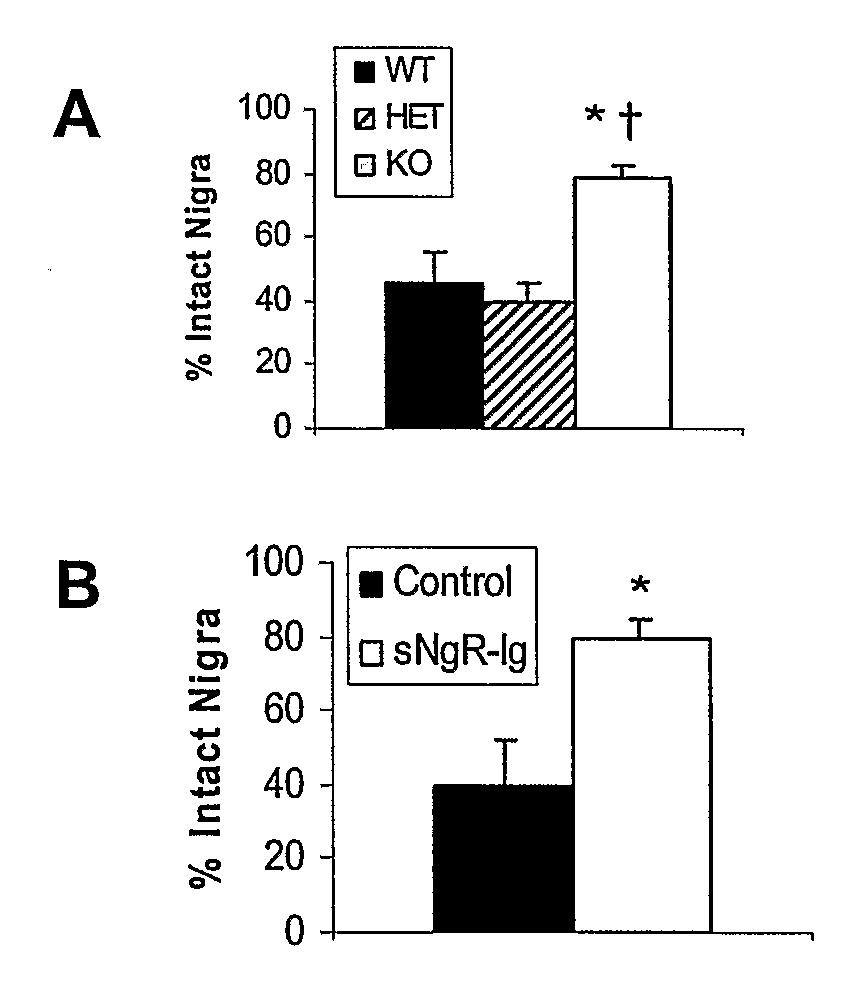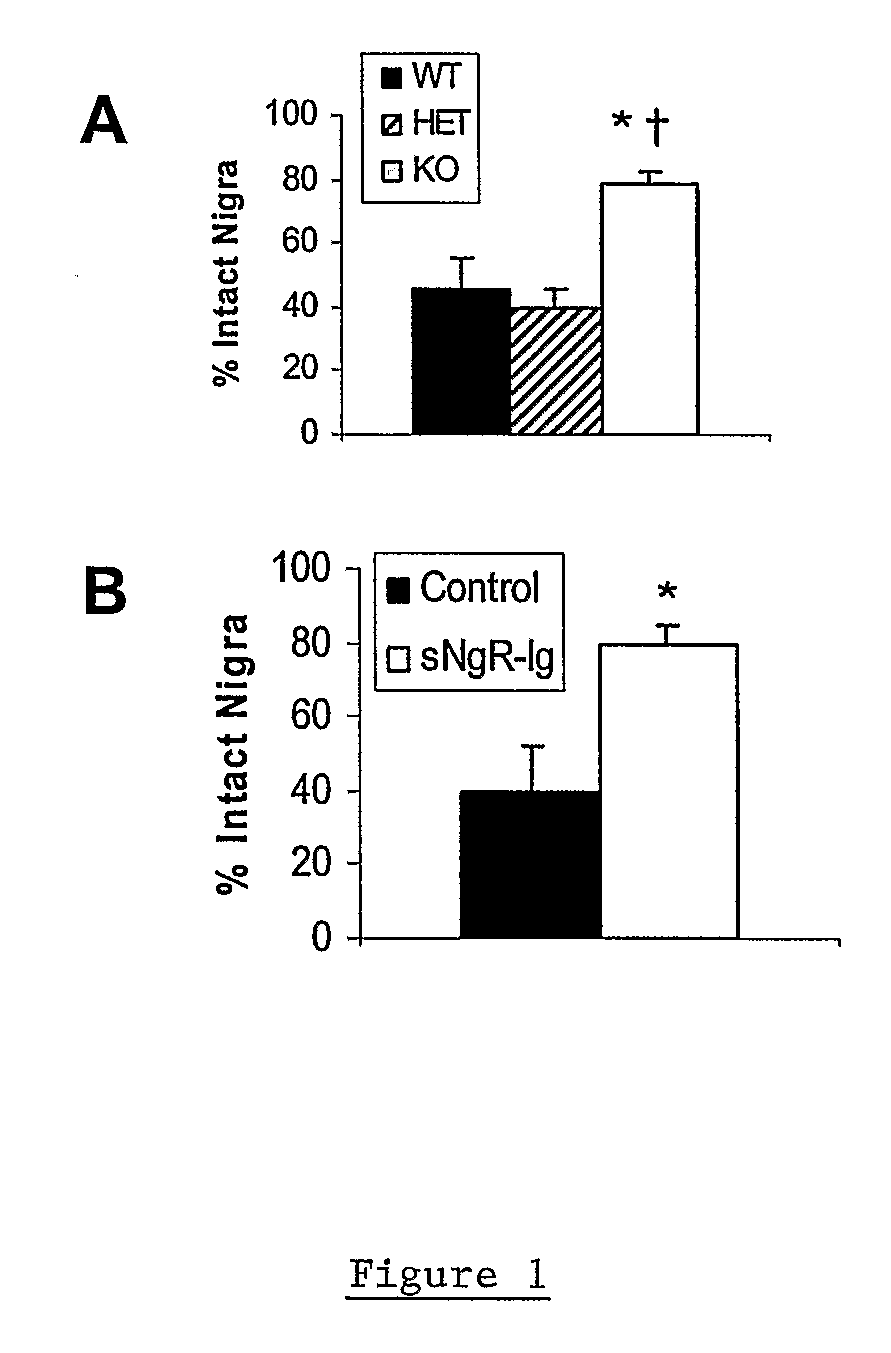Treatment of Conditions Involving Dopaminergic Neuronal Degeneration Using Nogo Receptor Antagonists
- Summary
- Abstract
- Description
- Claims
- Application Information
AI Technical Summary
Benefits of technology
Problems solved by technology
Method used
Image
Examples
example 1
Soluble Nogo Receptor (310)-Fc Reduced Rotational Behavior and Increased Striatal Dopamine Levels after 6-Hydroxydopamine Lesioning in the Rat
[0061]Male Sprague-Dawley rats (150-200 g, Charles River) were anaesthetized using isoflurane and placed in a stereotaxic frame. The surgical site was wiped with betadine and alcohol and a 1-inch midline saggittal incision made to expose bregma. A Small burr hole was made in the skull above the injection site and 20 μg 6-hydroxydopamine HCl (6-OHDA) in 2 μl (saline / 0.2% ascorbate) stereotaxically infused into the left striatum at co-ordinates AP +0.7, Lateral 2.8 mm lateral to the midline, DV −5.5 mm ventral to the surface of the skull. The 6-OHDA was infused over 4 min at a rate of 0.5 μl / min using a syringe pump attached with polyethylene tubing to a 29 gauge stainless steel cannula. After infusion of the 6-OHDA, the cannula was left in place for an additional 2 min then withdrawn slowly. An alzet brain infusion cannula, 5 mm in length, was ...
example 2
Reduced Rotational Behavior in Response to Apomorphine Challenge in NgR Null Mice after 6-OHDA Lesioning of the Striatum
[0064]Male or female Nogo receptor knockout mice, heterozygote and wild-type littermates (15-30 g) were anesthetized using ketamine and xylazine (100 and 10 mg / kg ip, respectively) and placed in a stereotaxic frame. The surgical site was wiped with betadine and alcohol and a 0.5 cm midline saggittal incision made to expose bregma. A Small burr hole was made in the skull above the injection site and 10 μg 6-hydroxydopamine HCl (6-OHDA) in 1 μl (saline / 0.2% ascorbate) stereotaxically infused into the left striatum at co-ordinates AP+0.7, Lateral 2.8 mm, lateral to the midline, DV −5.5 mm ventral to the surface of the skull. The 6-OHDA was infused over 2 min at a rate of 0.5 μl / min using a syringe pump attached with polyethylene tubing to a 29 gauge stainless steel cannula. After infusion of the 6-OHDA, the cannula was left in place for an additional 2 min then withdr...
PUM
| Property | Measurement | Unit |
|---|---|---|
| Fraction | aaaaa | aaaaa |
| Dimensionless property | aaaaa | aaaaa |
| Dimensionless property | aaaaa | aaaaa |
Abstract
Description
Claims
Application Information
 Login to View More
Login to View More - R&D
- Intellectual Property
- Life Sciences
- Materials
- Tech Scout
- Unparalleled Data Quality
- Higher Quality Content
- 60% Fewer Hallucinations
Browse by: Latest US Patents, China's latest patents, Technical Efficacy Thesaurus, Application Domain, Technology Topic, Popular Technical Reports.
© 2025 PatSnap. All rights reserved.Legal|Privacy policy|Modern Slavery Act Transparency Statement|Sitemap|About US| Contact US: help@patsnap.com



